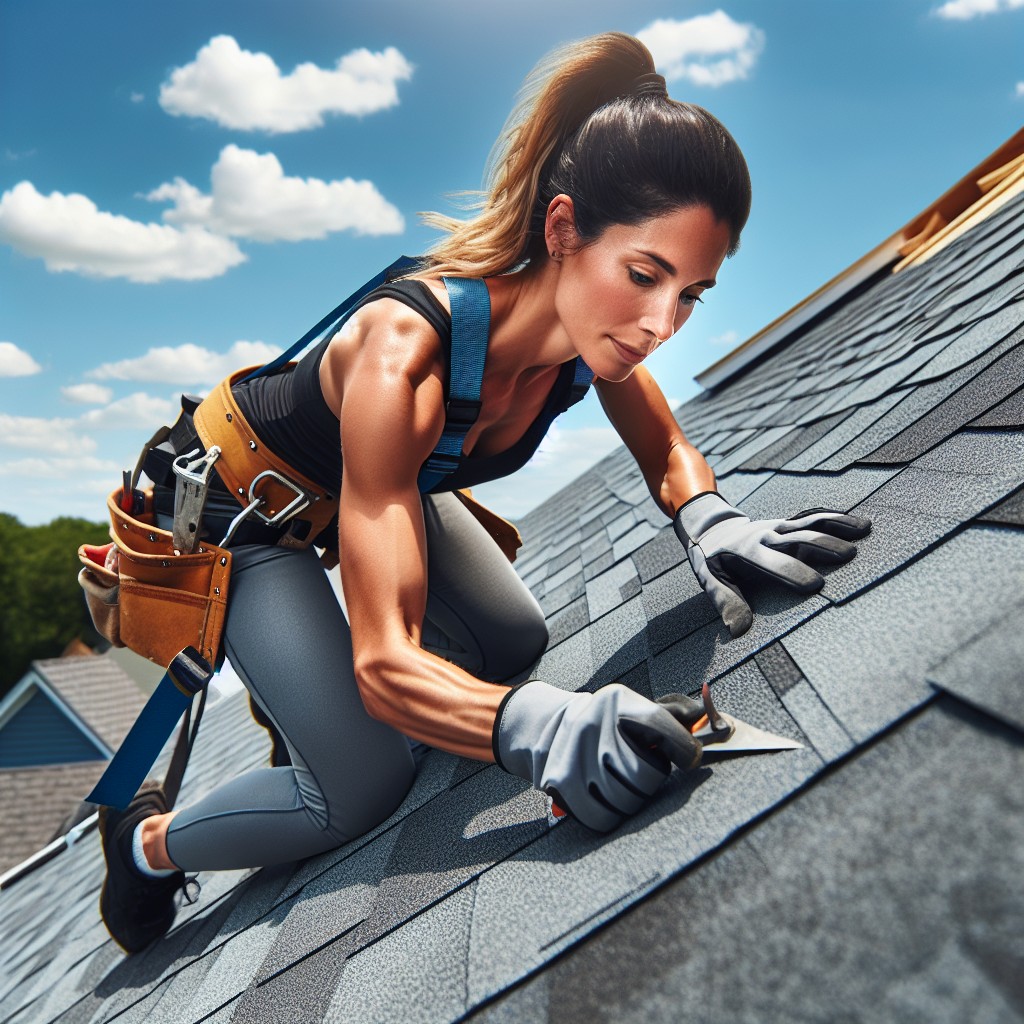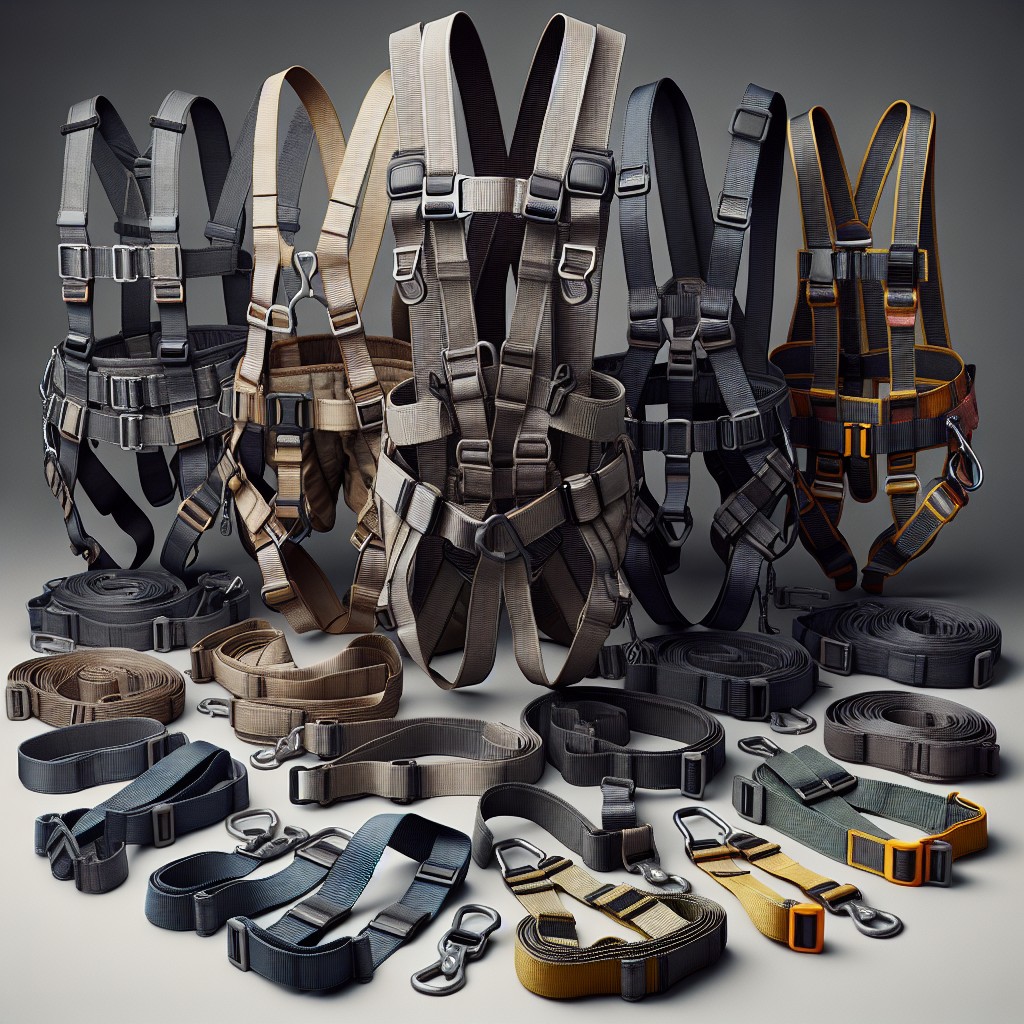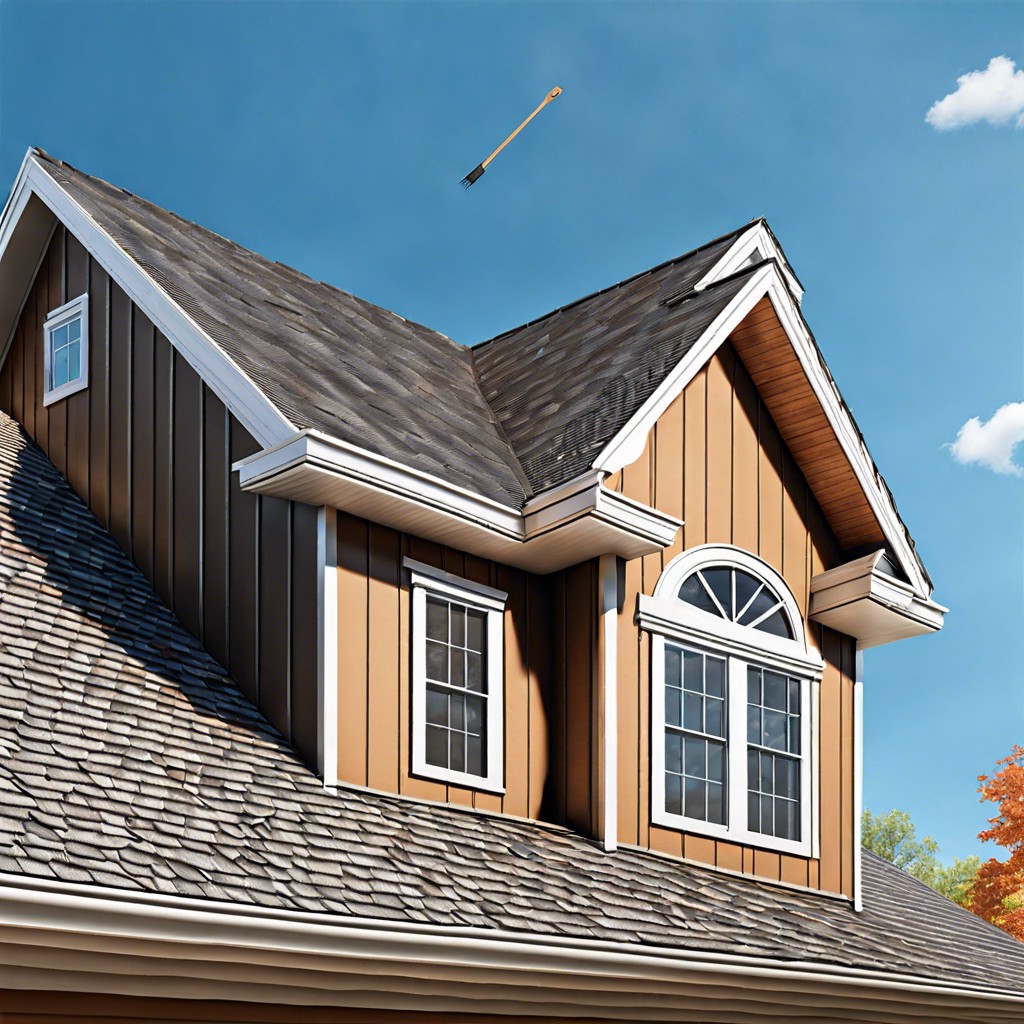Last updated on
Understand the imperative benefits of using a roof harness because safety on elevated heights is paramount when carrying out strides of repair or renovation.
Key takeaways:
- A roof harness greatly reduces the risk of injury or fatality in the event of a fall.
- There are various types of roof harnesses tailored to specific needs and job requirements.
- Key features of a roof harness include durable materials, adjustability, comfort padding, multiple attachment points, and fall indicators.
- When selecting a roof harness, consider weight capacity, fit, connectors, material, compatibility, and accessibility.
- Regular maintenance and proper care of a roof harness are essential for longevity and safety.
Importance of a Roof Harness

A roof harness is vital for anyone working at heights, as it significantly reduces the risk of injury or fatality in the event of a fall. It functions as part of a personal fall arrest system (PFAS), ensuring that a worker is securely anchored to the roof structure.
The Occupational Safety and Health Administration (OSHA) mandates the use of fall protection equipment, including harnesses, for work at elevations greater than six feet in the construction industry, a clear indicator of the importance of this safety device.
Beyond compliance, a harness provides workers with peace of mind, enabling them to move freely and focus on their tasks without the constant fear of falling. The critical role of a roof harness in a safety system illustrates its undeniable importance in protecting lives.
Types of Roof Harnesses

Safety harnesses for roofing come in various designs, each tailored to specific needs and job requirements. Basic harnesses offer minimum features necessary for safety, typically suited for light-duty work.
Standard models, which are more common, include additional padding, adjustable straps, and improved weight distribution for comfort during extended use.
For those tackling more complex projects, specialized harnesses boast enhanced functionality. These may feature tool-carrying options, reinforced attachment points, and materials that withstand harsh weather conditions.
Lastly, rescue harnesses include mechanisms for quick detachment and are integral for high-risk environments where rapid evacuation is essential.
When selecting a harness, consider the nature of your roofing tasks to ensure an appropriate match of harness type to the job’s demands.
Key Features of a Roof Harness
Durable materials resist wear and tear, ensuring longevity and safety. Webbing made of strong synthetic fibers like polyester and nylon is common, with metal components typically being corrosion-resistant alloys.
Load capacity is crucial, with most harnesses designed to support at least 5,000 pounds of force, as per safety guidelines, to accommodate the weight of the worker and any equipment.
Comfort is enhanced by padding on shoulder straps, waist belts, and leg loops, which also helps prevent strain on the body during long periods of use.
Adjustability allows a single harness to fit a range of body sizes and shapes, and give the wearer the ability to tailor the harness for snug yet comfortable fit.
Multiple attachment points, including D-rings located on the back (for fall arrest), front (for descent control), and side (for positioning) offer versatility in responding to different work situations.
Fall indicators are safety features included on some harnesses that show if a harness has been subjected to the stress of a fall, indicating it may no longer be safe for use.
Quick-Connect Buckles offer speed and ease of use while ensuring a secure connection once fastened.
Bright colors and reflective materials increase visibility to enhance safety, particularly in low light conditions or when working in complex environments with many workers.
Selection Criteria for Roof Harnesses
When selecting a roof harness, prioritize one that aligns with the nature of the work. For intensive usage, a durable, all-day comfort model is essential.
Consider the following points:
- Weight Capacity: Ensure the harness can support the user’s weight along with any tools.
- Fit: Choose a size-adjustable harness to accommodate various body types and seasonal clothing changes.
- Connectors: Look for sturdy D-rings and buckles that will not corrode or fail under stress.
- Material: Opt for weather-resistant, long-lasting fabrics that withstand harsh conditions.
- Comfort: Padded waistbands, leg straps, and shoulder pads enhance comfort for prolonged wear.
- Compatibility: The harness should integrate seamlessly with other safety gear like lanyards and lifelines.
- Accessibility: Features such as tool belts and integrated storage keep necessary items within reach.
Always compare these criteria against the specific safety standards and regulation compliance required for the job.
Safety Standards and Certifications
Navigating the landscape of safety standards and certifications ensures you’re equipped with a harness that meets rigorous protective benchmarks. The Occupational Safety and Health Administration (OSHA) mandates harnesses to comply with ANSI/ASSE Z359.11-2014 standards for fall protection. Additionally, scrutinize products for labels from trusted entities such as ANSI (American National Standards Institute) or CE (Conformité Européenne), which indicate adherence to both American and European safety requirements.
Before making a purchase, verify that the product’s documentation includes proof of testing and certification. This documentation should detail the specific conditions and limits of the harness’s use, ensuring that the equipment is suitable for your particular roofing activities. Manufacturers who follow these protocols often provide serial numbers for traceability and accountability, which can be instrumental in maintaining a record of equipment safety compliance.
Remember, while certifications are a solid foundation for safety, continuous education on safe harness usage remains an indispensable complement to these protective measures.
Proper Fitting and Adjustment of a Roof Harness
Correctly fitting and adjusting a roof harness is essential to ensure maximum safety and comfort during use. The process typically involves several steps:
1. Start with the Dorsal D-Ring: Ensure it’s centered between the shoulder blades. This is crucial for even weight distribution in the event of a fall.
2. Adjust the Shoulder Straps: Tighten the straps until they are snug but not constricting. You should be able to slide a hand between the strap and your shoulder.
3. Position the Chest Strap: It should sit across the mid-chest area. Secure it in place to prevent slipping, yet allow full range of motion.
4. Leg Strap Comfort: Confirm that leg straps are firmly in place without cutting into the thighs. They should feel secure without hindering movement.
5. Buckle Securely: Fasten all buckles according to the manufacturer’s instructions, double-checking to ensure none are left unsecured.
6. Conduct a Fit Test: Bend over, squat, and simulate working movements to test the harness fit dynamically. Adjust if any discomfort or slack is noted.
7. Seek Assistance: It’s advisable to have a colleague help with fitting. A second pair of eyes can spot issues that are not immediately apparent to the wearer.
Remember, a poorly fitting harness not only hampers job performance but also significantly reduces protection in a fall situation.
Maintenance and Care Instructions for Roof Harnesses
Regular maintenance and proper care of your roof harness can significantly extend its lifespan and ensure your safety. To keep your harness in optimal condition:
- Inspect before each use for signs of wear, such as frayed straps, broken fibers, or loose stitching. Immediate action is required if any damage is detected.
- Clean your harness periodically using mild soap and water to remove dirt and contaminants, which can degrade the materials over time. Avoid harsh chemicals as they may compromise the integrity of the harness.
- Store the harness in a dry, cool place away from direct sunlight, which can weaken the fibers due to UV exposure.
- Keep the harness away from sharp objects and edges when storing or using, as cuts or abrasions can affect its strength.
- Follow the manufacturer’s guidelines for the specific roof harness model, as some may have unique care instructions or recommendations.
By adhering to these care instructions, your roof harness will be ready to provide reliable protection whenever you’re working at heights.
Inspection and Replacement Guidelines
Regular inspections are crucial to ensure the reliability of your roof harness. Before each use, perform a visual check for wear, damage, or defects, focusing on:
- Webbing: Look for frays, cuts, burns, and UV damage.
- Stitching: Check for loose, pulled, or missing threads.
- Metal components: Examine for cracks, sharp edges, corrosion, or deformation.
- Buckles and D-rings: Ensure they function correctly and snap back into place.
- Labels: Confirm they are legible, displaying proper certification and usage guidelines.
Annual professional inspections by a competent person are recommended. Follow the manufacturer’s guidelines for more frequent assessments when used in harsh conditions.
As for replacement, adhere to the following:
- Immediately remove from service any harness that has arrested a fall.
- Replace your harness according to the manufacturer’s expiration date or if inspection reveals any signs of significant wear or damage.
- Discard any harness involved in a severe impact, even if no visible damage is apparent, as internal weaknesses could compromise safety.
Do not attempt to repair a damaged harness. Proper disposal is essential to prevent any failed equipment from being reused.
Common Mistakes to Avoid When Using a Roof Harness
Improper attachment points can compromise safety, so always connect the harness to a secure anchor point according to the manufacturer’s instructions. Neglecting to do so could lead to a false sense of security and potential danger.
Adjusting the harness incorrectly — too loose or too tight — impairs mobility and increases the risk of injury. Ensure that the fit allows for a full range of motion while still being snug to prevent falls and slippage.
Overlooking regular inspections of the harness and its components for wear and tear is a critical error. Before each use, examine the harness for damaged webbing, stitching, and buckles as undetected deterioration compromises the integrity of the harness.
Using the harness beyond its lifespan is another issue; materials degrade over time even if the harness isn’t visibly damaged. Always adhere to the manufacturer’s recommended service life and replacement guidelines.
Lastly, bypassing training on the correct usage of roof harnesses can result in misuse. Comprehensive training is essential for understanding the correct procedures for donning, adjusting, and using the harness effectively.
Emergency Procedures Involving a Roof Harness
In the event of a fall, the harness should distribute forces safely across the body to minimize injury. Immediate action is crucial. The following points outline emergency procedures:
- Alert authorities or signal for help as swiftly as possible.
- Engage any fall arrest system if it didn’t activate automatically during the fall.
- Remain calm to conserve energy and maintain clear thinking, as panic can exacerbate the situation.
- Try to establish a secure and comfortable position to reduce the risk of suspension trauma while waiting for rescue.
- If suspended, keep moving your legs to maintain circulation and prevent blood from pooling.
- Use a suspension trauma safety strap, if available, to alleviate pressure and support a more upright body position.
- Do not attempt to unhook yourself from the harness unless you are on a safe surface or have no other option.
A rescue plan should be prearranged, practiced, and implemented efficiently owing to the time-sensitive nature of fall-related emergencies.
FAQ
What do you attach a roof harness to?
A roof harness is attached to a safety anchor, which is a crucial component of a personal fall protection system and is typically secured with nails on the top of a roof or around stable beams.
Are roofers required to wear harnesses?
Yes, roofers are required to wear harnesses, as stipulated by the Occupational Safety and Health Administration (OSHA) in most U.S. jurisdictions, particularly if working on a high-sloped roof that’s six or more feet off the ground without guardrails and safety nets.
Do you need a harness to work on a roof?
Yes, a harness is essential when working on a roof, particularly if the roof is steep, its surface is slippery or fragile, as it provides safety and prevents dangerous falls.
How are roof harnesses maintained for longevity and safety?
Roof harnesses are maintained for longevity and safety through regular inspections for wear and damage, proper cleaning and storage procedures, and periodic replacement as recommended by the manufacturer.
What factors determine the perfect fit for a roofing harness?
The perfect fit for a roofing harness depends on factors like the individual’s body size, workload, comfort, safety restrictions, and additional attachments needed for the tasks at hand.
Can a roof harness be used on all types of roofs?
A roof harness can be used on all types of roofs, providing an essential safety measure for workers.




